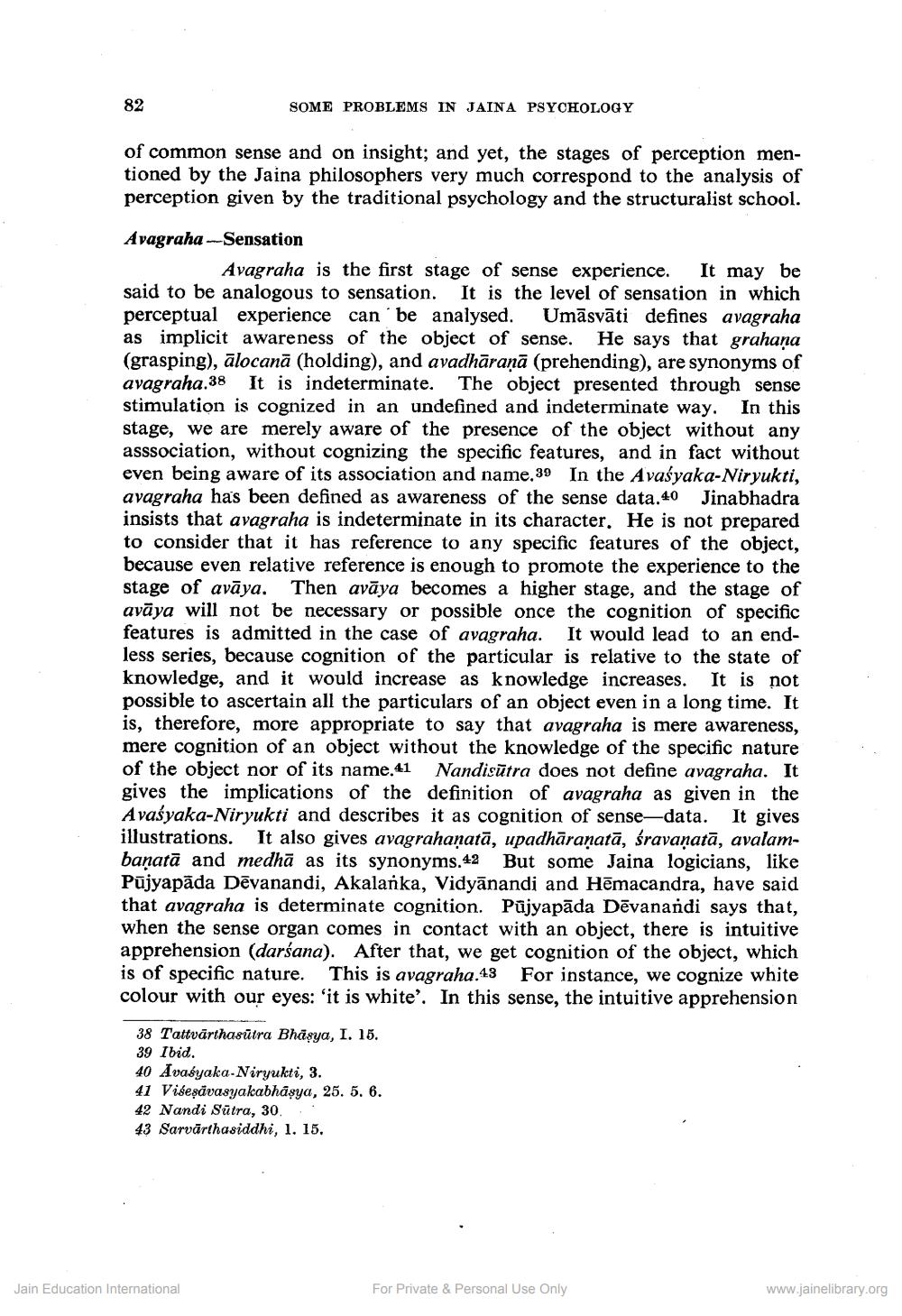________________
82
SOME PROBLEMS IN JAINA PSYCHOLOGY
of common sense and on insight; and yet, the stages of perception mentioned by the Jaina philosophers very much correspond to the analysis of perception given by the traditional psychology and the structuralist school.
Avagraha Sensation
Avagraha is the first stage of sense experience. It may be said to be analogous to sensation. It is the level of sensation in which perceptual experience can be analysed. Umāsvāti defines avagraha as implicit awareness of the object of sense. He says that grahaņa (grasping), ālocanā (holding), and avadhāraņā (prehending), are synonyms of avagraha.38 It is indeterminate. The object presented through sense stimulation is cognized in an undefined and indeterminate way. In this stage, we are merely aware of the presence of the object without any asssociation, without cognizing the specific features, and in fact without even being aware of its association and name.39 In the Avaśyaka-Niryukti, avagraha has been defined as awareness of the sense data. 40 Jinabhadra insists that avagraha is indeterminate in its character. He is not prepared to consider that it has reference to any specific features of the object, because even relative reference is enough to promote the experience to the stage of avāya. Then avāya becomes a higher stage, and the stage of avāya will not be necessary or possible once the cognition of specific features is admitted in the case of avagraha. It would lead to an endless series, because cognition of the particular is relative to the state of knowledge, and it would increase as knowledge increases. It is not possible to ascertain all the particulars of an object even in a long time. It is, therefore, more appropriate to say that avagraha is mere awareness, mere cognition of an object without the knowledge of the specific nature of the object nor of its name.41 Nandisūtra does not define avagraha. It gives the implications of the definition of avagraha as given in the Avaśyaka-Niryukti and describes it as cognition of sense-data. It gives illustrations. It also gives avagrahaņatā, upadhāraṇatā, śravaṇatā, avalambanatā and medhā as its synonyms.42 But some Jaina logicians, like Pūjyapāda Dēvanandi, Akalanka, Vidyānandi and Hēmacandra, have said that avagraha is determinate cognition. Pujyapāda Dēvanandi says that, when the sense organ comes in contact with an object, there is intuitive apprehension (darśana). After that, we get cognition of the object, which is of specific nature. This is avagraha.43 For instance, we cognize white colour with our eyes: 'it is white'. In this sense, the intuitive apprehension
38 Tattvārthasūtra Bhāşya, I. 15. 39 Ibid. 40 Avasyaka-Niryukti, 3. 41 Visesävasyakabhâsya, 25. 5. 6. 42 Nandi Sūtra, 30. 43 Sarvārthasiddhi, 1. 15.
Jain Education International
For Private & Personal Use Only
www.jainelibrary.org




